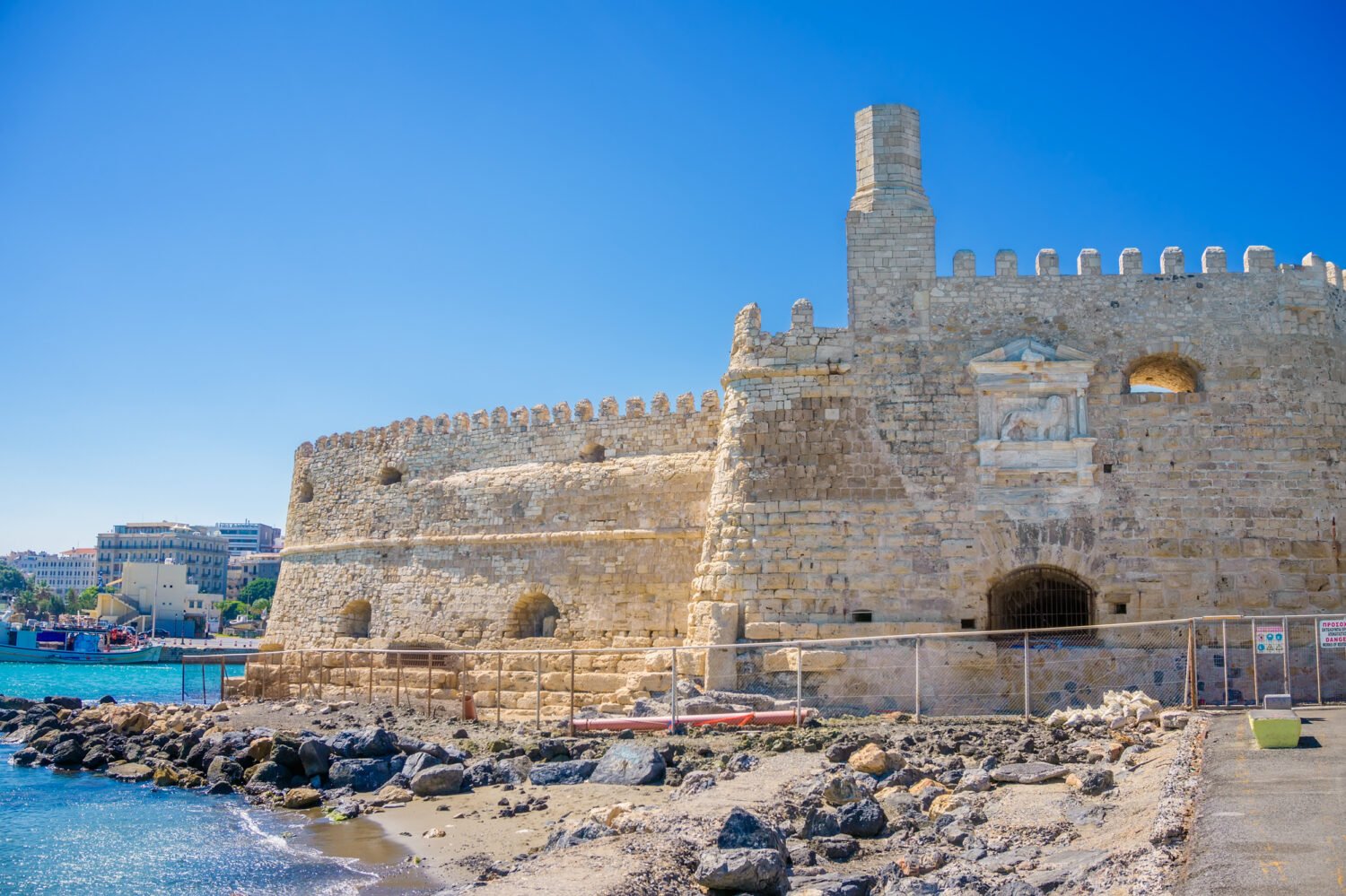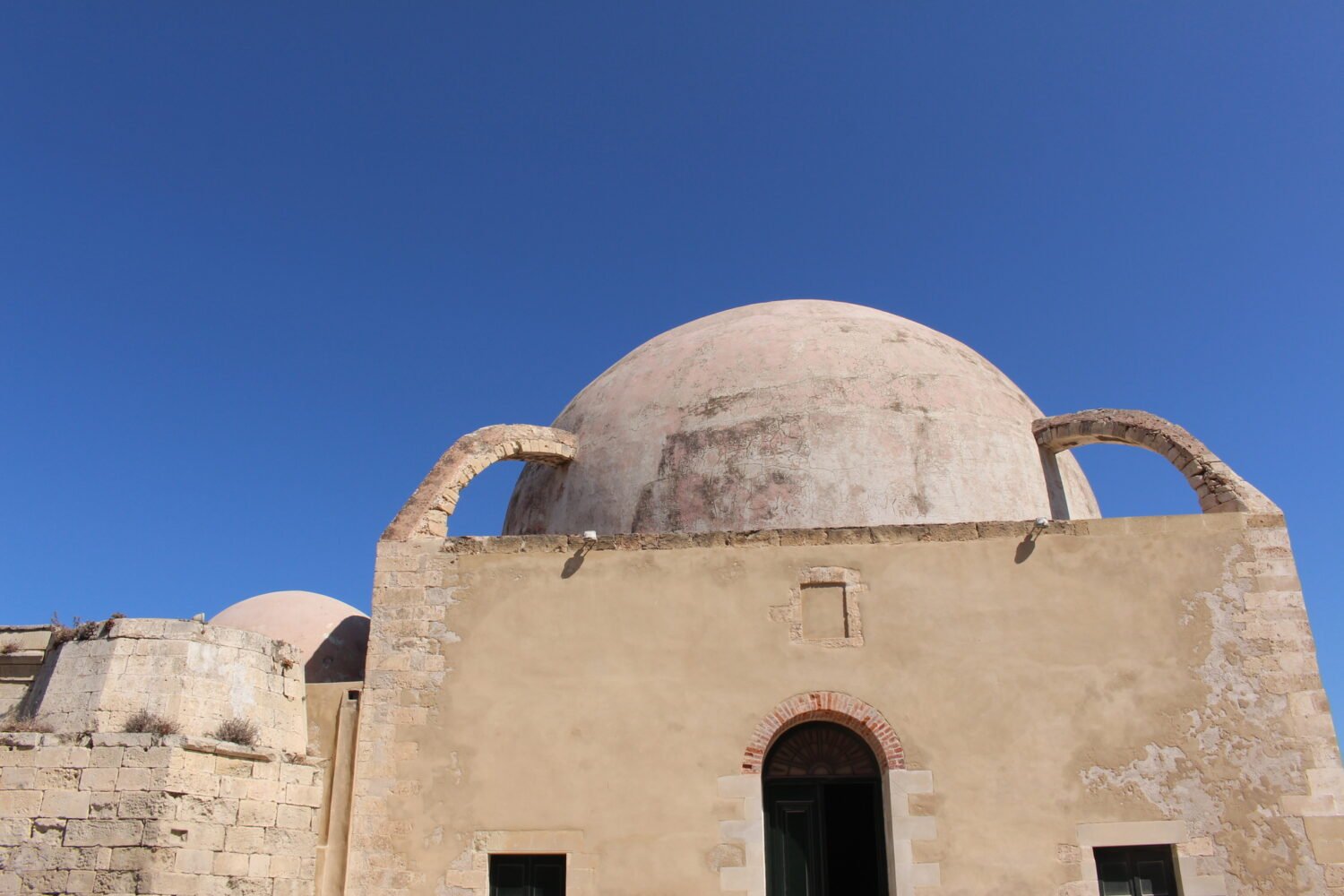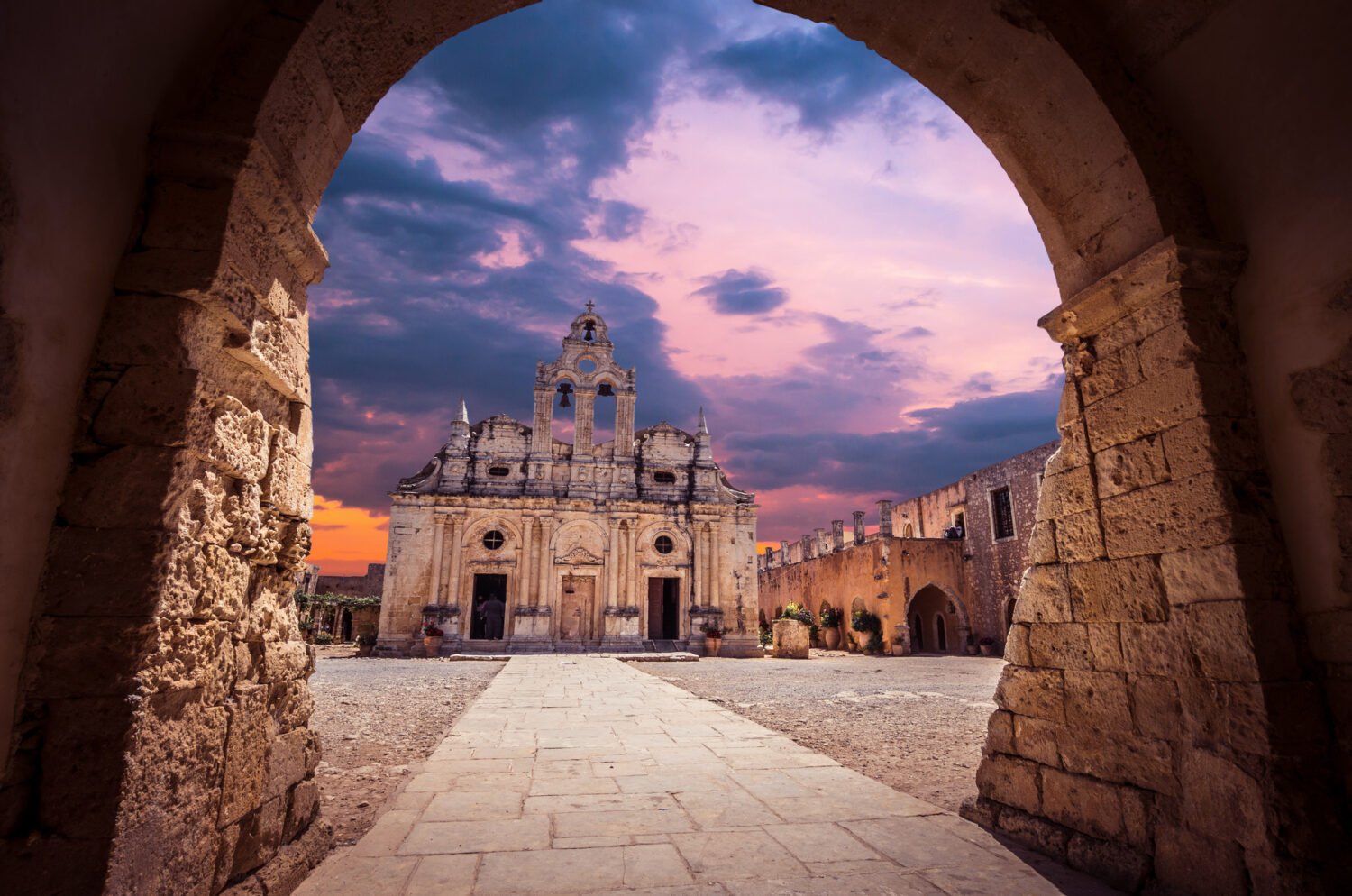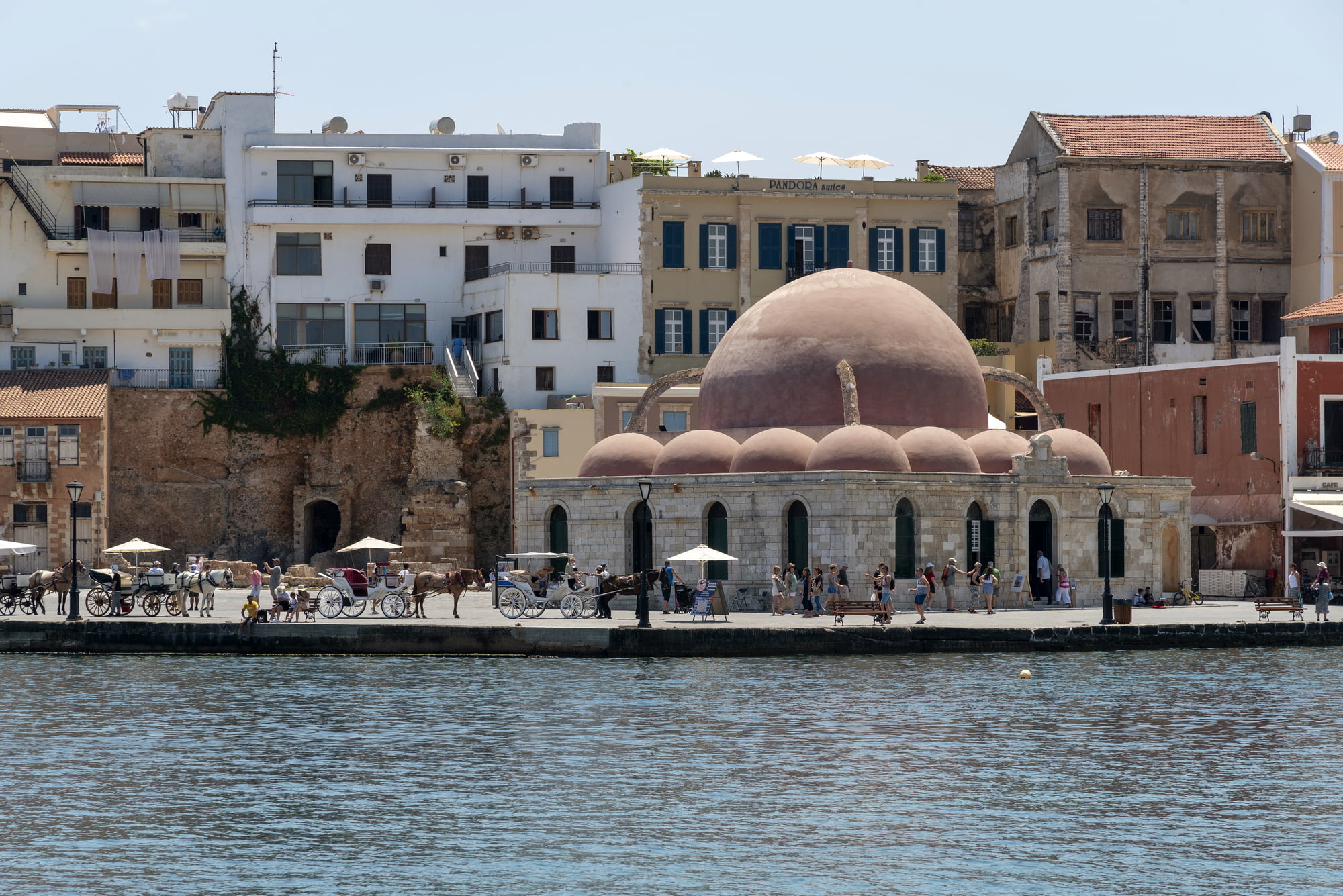The Explosive Ottoman Era in Crete (1669-1898 CE): A Period of Transformation and Resilience
Crete, an island of unparalleled beauty and historical significance, has witnessed the rise and fall of numerous civilisations. Each era has left an indelible mark on the island’s culture and heritage, from the ancient Minoans to the Byzantines. Among these epochs, the Ottoman period (1669-1898 CE) stands out as a time of profound transformation and resilience for the Cretan people.
The Siege of Candia: A Prolonged Battle for Crete
The Siege of Candia, which took place between 1648 and 1669, is one of the longest in recorded history. Lasting for more than two decades, this epic confrontation between the Republic of Venice and the Ottoman Empire was not just a battle for control of a city but a struggle for dominance in the eastern Mediterranean.
Background
Crete, known as Candia under Venetian rule, was a jewel in the crown of the Venetian maritime empire. Its strategic location made it a vital outpost for trade and military endeavours. Recognising its importance, the Ottoman Empire, expanding its territories across the Mediterranean, set its sights on the island.
The Siege Begins
In 1648, Grand Vizier Köprülü Mehmed Pasha of the Ottoman Empire launched the siege to wrest control of Crete from the Venetians. The primary target was the city of Candia (modern-day Heraklion), the island’s capital and a formidable fortress. Under the leadership of various commanders over the years, the Venetians were determined to hold their ground. The city’s fortifications, built over centuries and enhanced by the Venetians, were among the most advanced.
The Challenges of a Prolonged Siege
The length of the siege presented numerous challenges for both sides:
- Supply Lines: Both the Ottomans and Venetians needed help maintaining supply lines for their troops. The Venetians, however, had the advantage of naval support, allowing them to receive supplies and reinforcements from the sea.
- Diplomacy: The protracted siege meant that diplomatic efforts were continually in play. Both sides sought allies and attempted to negotiate a favourable end to the conflict.
- Changing Command: Over the 21 years, leadership on both sides changed multiple times, leading to shifts in strategies and tactics.
Key Moments
The Venetians repelled several attempts by the Ottomans to breach the city’s walls. Notable events during the siege included:
- The Tunnel Warfare: The Ottomans tried to dig tunnels under the walls to breach the city’s defences. However, the Venetians, using counter-tunnels, thwarted these efforts.
- Naval Skirmishes: The Venetian fleet played a crucial role in preventing the complete encirclement of the city, engaging in several naval battles and skirmishes with the Ottoman navy.
The End of the Siege
By the late 1660s, both sides were weary from the prolonged conflict. The cost in terms of resources, manpower, and finances was immense. Diplomatic efforts intensified, leading to the signing of the Treaty of Vasvár in 1669. The Venetians agreed to surrender Candia to the Ottomans but were granted safe passage to leave the city and retain some of their other possessions.
Legacy
The Siege of Candia symbolised the larger struggle between Christian Europe and the Muslim Ottoman Empire. Its conclusion marked the end of Venetian influence in the eastern Mediterranean and solidified the Ottoman Empire’s dominance. Today, the remnants of the siege, including the fortifications of Heraklion and the stories of heroism and endurance, serve as a testament to the city’s resilience and the broader historical currents of the 17th-century Mediterranean world.

A Mosaic of Cultures: Crete Under Ottoman Rule
The Ottoman period in Crete, from 1669 to 1898, was a time of significant cultural transformation. Previously under Venetian control, the island became a melting pot of diverse traditions, religions, and customs. This fusion of cultures, while occasionally fraught with tension, led to a rich tapestry of shared experiences and mutual influences that shaped the island’s unique identity.
The Confluence of Religions
One of the most profound impacts of Ottoman rule was the coexistence of Islam with the already-established Christian Orthodoxy on the island.
- Islamic Influence: With the Ottoman conquest, many Muslim settlers arrived in Crete. Mosques, such as the Neratze Mosque in Rethymno and the Vezir Mosque in Heraklion, were established, becoming centres of worship and community gatherings.
- Christian Endurance: Despite the Ottoman presence, the Christian community in Crete remained robust. The Cretan Orthodox Church continued its practices, and many churches, some of which had been converted into mosques, still held traces of their Christian origins.
Language and Literature
The linguistic landscape of Crete evolved during the Ottoman era. While Greek remained the predominant language, Turkish and Arabic words seeped into the local dialect, enriching it. Literature, too, saw a synthesis of styles. Cretan poets and writers began incorporating Ottoman poetic forms, creating a unique blend of Eastern and Western literary traditions.
Art and Architecture
The architectural skyline of Crete transformed with the introduction of Ottoman styles:
- Ottoman Architecture: Apart from mosques, the Ottomans introduced baths (hammams), fountains, and administrative buildings. These structures, with their domes, minarets, and intricate carvings, added a new dimension to Cretan architecture.
- Shared Artistic Motifs: In the realm of art, Cretan painters began to adopt Ottoman motifs, blending them with Byzantine and Venetian techniques. This fusion is evident in the island’s iconography and frescoes from this period.
Culinary Fusion
Cretan cuisine, renowned for its flavours, was further enhanced by Ottoman culinary traditions. Dishes like moussaka, baklava, and dolmades, now staples in Greek cuisine, have their roots in Ottoman culinary practices.
Social and Economic Life
The Ottoman era brought about changes in the social fabric of Crete. The introduction of the millet system, which organised communities based on religion, allowed a degree of autonomy for the Christian population in matters of personal law. Economically, Crete became integrated into the more extensive Ottoman trade network. The island’s agricultural products, especially olive oil and wine, found new markets in the Ottoman territories.

The Weight of Occupation
The Ottoman conquest of Crete in 1669 brought with it significant challenges for the Cretan populace:
- Religious Pressures: While the Ottomans generally allowed religious freedom under the millet system, there were instances of forced conversion to Islam. Many Cretans, however, clung steadfastly to their Christian faith, preserving their religious traditions against the odds.
- Economic Burdens: The Cretan economy, primarily agricultural, was subjected to heavy taxation by the Ottoman authorities. This often led to financial hardships for the ordinary people.
- Cultural Suppression: Efforts to assimilate the Cretan populace into the broader Ottoman culture sometimes resulted in the suppression of local customs, language, and traditions.
The Flame of Resistance
Despite these challenges, the Cretan spirit remained unbroken. Throughout the Ottoman period, the island witnessed numerous revolts:
Daskalogiannis Revolt (1770): A Symbol of Cretan Defiance
The Daskalogiannis Revolt of 1770 is a poignant chapter in Crete’s history of resistance against foreign domination. Led by the charismatic and courageous figure of Ioannis Vlachos, better known as Daskalogiannis, this uprising against the Ottoman Empire, though short-lived, became a symbol of Cretan defiance and the indomitable spirit of its people.
The Man Behind the Revolt: Daskalogiannis
Ioannis Vlachos, who would later earn the moniker “Daskalogiannis” (meaning “John the Teacher”), was a wealthy shipbuilder and merchant from the region of Sfakia in Crete. His influence, affluence, and deep-seated desire for Cretan autonomy positioned him as a natural leader for a revolt.
Catalysts for the Uprising
Several factors contributed to the eruption of the revolt in 1770:
- Ongoing Oppression: The Cretan populace had been under the yoke of the Ottoman Empire for a century by this time. The heavy taxation, forced conversions, and general oppression fueled discontent among the people.
- Russian Ambitions: The Russo-Turkish War (1768-1774) provided a backdrop for the revolt. Russia, aiming to weaken the Ottoman Empire, encouraged and promised support to Orthodox Christian communities, including the Cretans, to rise against the Ottomans.
- Economic Strain: The economic hardships faced by the Cretans, exacerbated by the Ottoman policies, further stoked the flames of rebellion.
The Revolt Unfolds
With the promise of Russian support, Daskalogiannis mobilised the people of Sfakia and other regions of Crete. The revolt began with guerrilla attacks on Ottoman outposts and symbols of authority. However, the expected Russian assistance did not materialise, leaving the rebels disadvantaged. With their superior numbers and resources, the Ottomans responded with brutal force.
The Tragic End
The revolt was suppressed within a year. Daskalogiannis, captured by the Ottomans, faced a particularly gruesome fate. In a show of extreme cruelty, he was publicly flayed alive in Heraklion in 1771. This brutal act was intended to serve as a deterrent to future rebellions.
Legacy of the Revolt
While the Daskalogiannis Revolt did not achieve its immediate objective of freeing Crete from Ottoman rule, its impact was profound:
- Symbol of Resistance: Daskalogiannis became a martyr and a symbol of Cretan resistance. His sacrifice inspired future generations to continue the fight for freedom.
- Cultural Impact: The revolt and its leader found their way into Cretan folklore, songs, and stories. Daskalogiannis’s bravery and the spirit of the revolt are commemorated in various cultural expressions today.
- Continued Struggle: The revolt of 1770 was one in a series of uprisings that dotted Crete’s history under Ottoman rule. Each of these rebellions, including the one led by Daskalogiannis, kept the flame of resistance alive.
The Great Cretan Revolt of 1866: A Defining Moment in Cretan History
The Great Cretan Revolt of 1866 is one of the most significant uprisings in Crete’s long history of resistance against foreign rule. This rebellion against the Ottoman Empire, fueled by the desire for autonomy and union with Greece, became pivotal in shaping the island’s future trajectory.
Prelude to the Revolt against the Ottoman.
By the mid-19th century, the winds of nationalism were sweeping across Europe, and Crete was no exception. The Cretan desire for enosis, or union with Greece, grew stronger. Several factors contributed to the mounting tensions:
- Ottoman Oppression: The Cretan populace had long been subjected to heavy taxation, religious pressures, and cultural suppression under the Ottomans.
- Previous Uprisings: There had been several revolts against Ottoman rule in the preceding decades, further intensifying the Cretan desire for freedom.
- External Influences: The broader geopolitical landscape, especially the involvement of European powers and the rise of Greek nationalism, played a role in stoking the flames of rebellion.
The Revolt Erupts
In 1866, the simmering discontent erupted into a full-blown revolt. The rebellion was widespread, involving various regions of Crete. The Cretans, though outnumbered and outgunned, showcased remarkable determination and resourcefulness.
The Arkadi Monastery: A Symbol of Sacrifice
One of the revolt’s most poignant episodes was the Arkadi Monastery’s siege. The monastery, which had become a stronghold for the rebels, was besieged by Ottoman forces in November 1866. As the Ottomans closed in, the defenders, realising that capture was imminent, made a fateful decision. They blew up the monastery’s gunpowder store, sacrificing themselves rather than surrendering. This act of defiance and sacrifice symbolised Cretan resistance and garnered international attention.

International Implications
The events at Arkadi and the broader revolt caught the attention of the European powers. The brutality of the Ottoman response, combined with the Cretans’ genuine desire for freedom, led to international sympathy for the Cretan cause:
- Media Coverage: European newspapers extensively covered the revolt, especially the Arkadi tragedy, leading to public outcry against the Ottomans.
- Diplomatic Interventions: European powers, especially Britain, France, and Russia, began diplomatic interventions, pressuring the Ottoman Empire to grant concessions to the Cretans.
Aftermath and Legacy
While the Ottomans eventually suppressed the revolt, it was not in vain:
- Reforms: Under international pressure, the Ottoman Empire introduced the Halepa Pact in 1878, granting Crete a degree of autonomy and ensuring religious freedoms and other rights for the Cretan populace.
- Path to Union: The 1866 revolt was a significant step on Crete’s path to union with Greece. The island’s fervent desire for enosis would eventually be realised in 1913 when Crete officially became part of Greece.
- Cultural Impact: The Great Cretan Revolt, especially the Arkadi tragedy, became deeply ingrained in Cretan folklore, literature, and collective memory. It serves as a reminder of the sacrifices made for freedom and the enduring spirit of the Cretan people.
Several Other Uprisings: The spirit of resistance manifested in multiple other revolts throughout the 18th and 19th centuries. Though varying in scale and outcome, each uprising underscored the Cretans’ desire for autonomy and freedom.
The Power of Endurance
Amidst the struggles, the Cretan people showcased remarkable resilience:
- Preservation of Culture: Despite pressures, the Cretans managed to preserve their language, customs, and traditions. Folk music, dance, and oral traditions became avenues through which the stories of resistance and hope were passed down through generations.
- Economic Ingenuity: Faced with economic challenges, the Cretans showcased adaptability, diversifying their trades and crafts. The island became known for its wine, cheese, and olive oil, which found markets beyond its shores.
- Solidarity and Unity: The shared struggles fostered a sense of solidarity among the Cretans. Communities often came together, supporting one another in hardship and resistance.
A Legacy of Endurance and Unity: Crete’s Timeless Testament
Crete, an island steeped in history and culture, has witnessed countless epochs of change, from the Minoan civilisation to the Byzantine era and from Venetian rule to Ottoman occupation. Yet, amidst these shifting sands of time, the legacy of the Cretan people remains unyielding: a legacy of endurance and unity. This indomitable spirit, especially during the Ottoman period, continues to define Crete’s identity and inspires future generations.
The Roots of Resilience
The challenges faced by the Cretans during the Ottoman era were manifold. From religious pressures and cultural assimilation to economic hardships, the island’s inhabitants had every reason to succumb. Yet, they chose resistance, unity, and preservation:
- Religious Fortitude: Despite attempts to convert them, many Cretans held steadfastly to their Christian faith, ensuring their religious traditions and practices remained alive.
- Cultural Preservation: The Cretan language, music, dance, and folklore became symbols of resistance. These artistic elements were not just preserved but celebrated, ensuring that future generations would inherit the rich tapestry of Cretan heritage.
Unity in Diversity
With its blend of Christian and Muslim communities, the Ottoman era could have been a period of divisive conflict. Instead, it became a testament to the possibility of coexistence:
- Interfaith Dialogues: While tensions existed, there were also periods of peaceful coexistence and mutual respect between the Christian and Muslim communities. This harmony showcased the Cretan ethos of understanding and tolerance.
- Shared Struggles: The challenges of the era, whether famines, economic downturns, or external threats, were faced collectively by the Cretan populace, regardless of their religious or cultural affiliations.
The Legacy in Modern Times
The enduring spirit of the Cretan people has left an indelible mark on the island’s modern identity:
- Tourism and Heritage: Today, Crete is a sought-after tourist destination. Visitors from around the world are drawn not just to its natural beauty but also to its rich history and culture. The stories of endurance and unity are proudly showcased in museums, historical sites, and cultural festivals.
- Societal Values: Resilience, unity, and coexistence are deeply ingrained in the Cretan psyche. These values influence everything from local governance and community initiatives to education and social interactions.
- Inspiration for the World: Crete’s legacy serves as a beacon of hope for regions worldwide facing challenges of cultural assimilation, religious conflict, or external occupation. The island’s history shows unity and endurance can overcome even the most formidable challenges.
Conclusion
Crete’s legacy of endurance and unity is not just a chapter in history books but a living testament that resonates in the hearts of its people. It serves as a reminder that even in the face of adversity, with unity and determination, a community can survive, thrive, and leave behind a legacy that inspires generations.
Table of Contents
Views: 206

